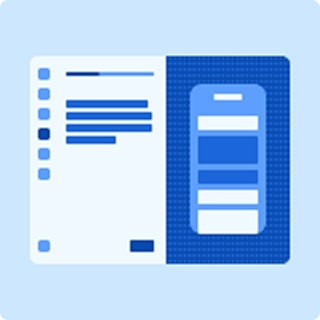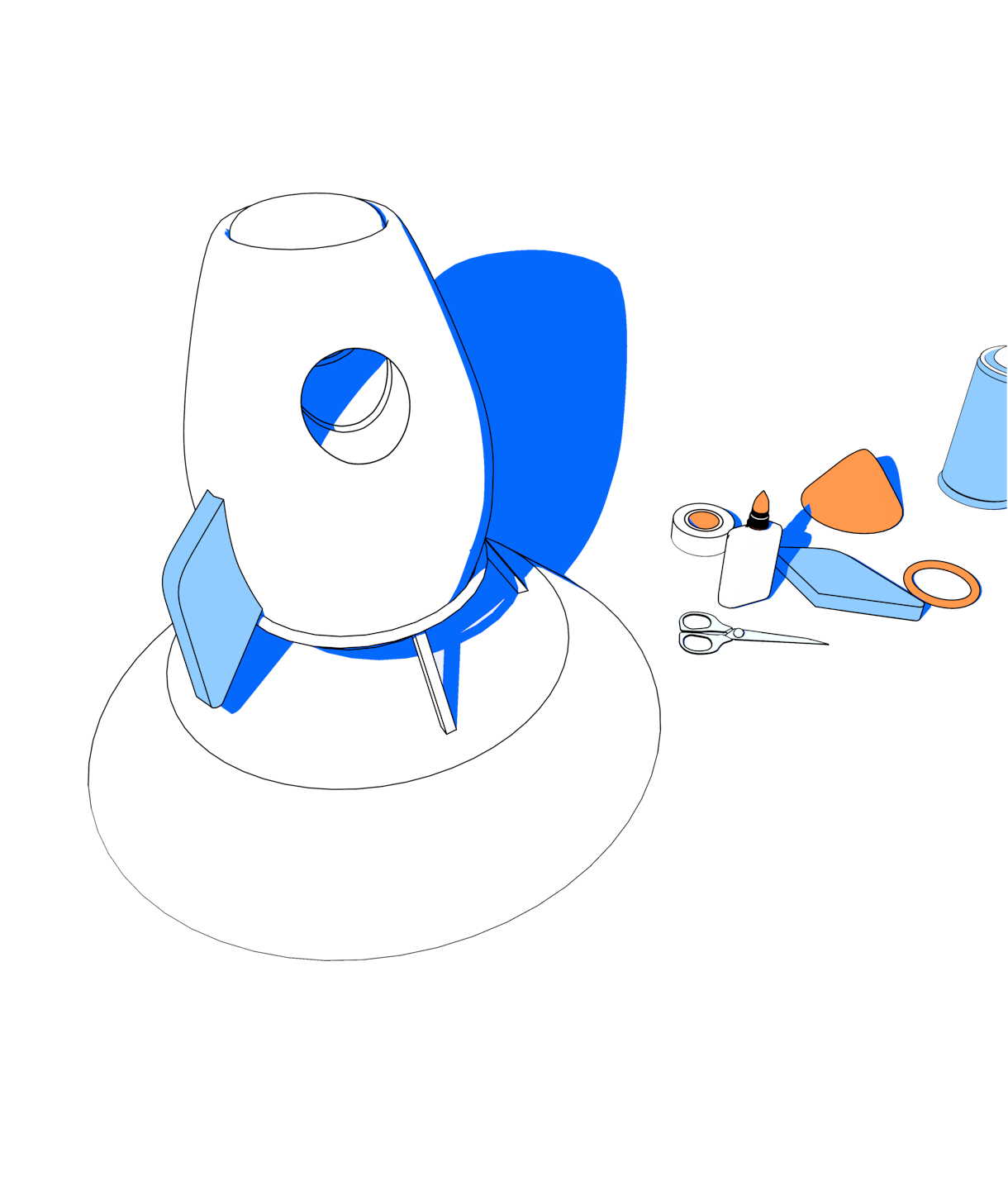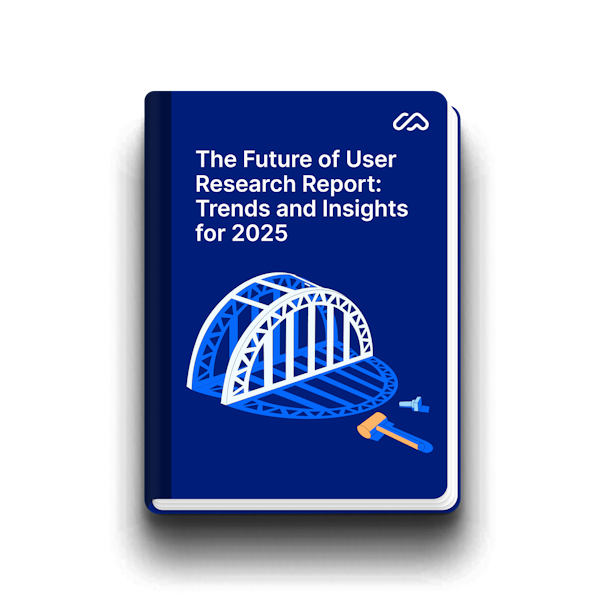New Product Development (NPD) is the process that combines research, design, and engineering to turn ideas into products that meet real customer needs. Unlike improving existing products, new product development focuses on bringing entirely new concepts to life—from initial research and ideation to market launch.
Keep reading for everything you need to know about NPD, including what it is, the seven stage process, and best practices for developing your own NPD process—along with tips from product experts at Meta, Priceline, Bonsai, and EduMe.
What is new product development (NPD)?
New product development refers to the complete process of bringing a new product to market. This can apply to developing an entirely new product, adding features to an existing one to keep it attractive and competitive, or introducing an old product to a new market.
The emergence of NPD is driven by the need of companies to maintain a competitive advantage in the market by introducing new products or innovating existing ones. While regular product development refers to building a product that already has a proof of concept, new product development focuses on developing an entirely new idea—from idea generation to development to launch.
NPD helps you:
- Stay updated with new technology and trends
- Beat the competition with creative solutions
- Offer more products and find new streams of revenue
- Adapt to changing customer needs
- Use resources more efficiently
- Improve your brand's image
- Grow your business and ensure sustainability
User research, and why it matters in NPD
User research is the foundation of every successful new product. It provides the insights that shape product concepts and validate ideas, and it ensures the final solution meets user needs and market demands.
Here’s how research fuels NPD:
- Understanding market needs: You can’t solve a problem you don’t understand. Research uncovers what users actually need (and what they don’t). It helps spot market gaps, track emerging trends, and assess customer demand, ensuring your product matters.
- Shaping your product: UX research gives you real feedback on what’s working and what’s not, letting you test and tweak ideas early. It’s how you turn “maybe this will work” into “this works.”
- Cutting costly mistakes: No one wants to spend months (or millions) on the wrong idea. Product research tells you when to pivot, refine, or go all in—saving you from expensive regrets down the road.
- Boosting your marketing: Building the product is one thing, selling it is another. Customer research helps you figure out how to position your product, price it right, and make it stand out in the market.
- Staying competitive: The market moves fast. Competitive research keeps you ahead by spotting trends and finding new opportunities before everyone else does.
Research is the glue holding everything together. Skip it, and you’re winging it. With it, you’re building products that people actually use and invest in—that’s what success looks like.
Types of new product development: When do you need an NPD process?
NPD adapts to the type of product you’re creating and the challenges you’re addressing. Typically, it falls into one of these three types:
New-to-the-world products
These are innovative products that have never been designed and developed before. These products have the capacity to create entirely new markets. Think of the first personal computers, for example, which brought computing into homes; or the initial release of smartphones, which changed how we communicate and access information. These products often come with high risks but also the potential for high rewards.
But bringing such groundbreaking ideas to life isn’t easy. Without an established market or clear demand, the risks are high. UX research drives clarity at every step:
- In the discovery phase, it identifies needs and validates your product’s potential
- During development, it helps you test and refine prototypes, ensuring your design is intuitive and aligned with user expectations
- By launch, research ensures your product is ready to meet the market’s demands, minimizing costly missteps
Here’s a compelling reason to invest in research: Every $1 spent on research delivers an ROI of $100. It’s not just about reducing risks; it’s about maximizing your chances of success in uncharted territory.
New-to-the-firm products
These products already exist in the market but are new to the company. Like when a male grooming company, initially focused on razors and beard care, expanded into new personal care products—like body wash and shampoo. This move doesn’t redefine the business, but it broadens the business offerings and can reach a wider audience.
However, entering a space where others already dominate requires more than ambition—it demands strategy, and that strategy.
The right market research and product discovery can answer crucial questions like:
- What are customers looking for in this product category?
- What frustrations do they have with existing options?
- How can your product stand out?
Research also helps you tailor your messaging and positioning. For example, competitive analysis might reveal that similar products emphasize low cost but fail to communicate quality. With this insight your marketing team can highlight premium features and offer a fresh value proposition.
Additions to existing product lines
This involves introducing new versions or variations of existing products. For example:
Software updates that introduce new features, improved security, bug fixes, and user interface improvements
Revisions to an existing product's design, materials, or process to improve its functionality, durability, or cost-effectiveness
Upgrades or replacements of specific components or subsystems within a larger product to improve its overall capabilities or performance
The goal is to keep the existing product relevant, competitive, and aligned with evolving customer needs and market trends—rather than introducing an entirely new product line. These additions help keep the product line fresh and appealing to customers, offering them more choices and meeting diverse needs.
The 7 stages of new product development: A step-by-step process
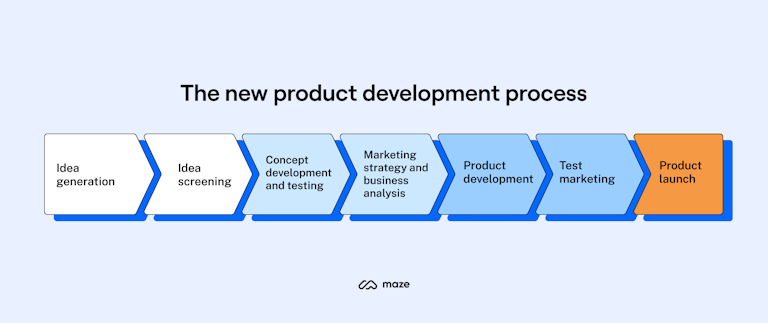
When it comes to new product development, each journey to a finished product is different. Although the product development process can vary from company to company, it's possible to break it down into seven main stages. Let's have a look at them one by one.
1. Idea generation
Idea generation involves brainstorming for new product ideas or ways to improve an existing product. During product discovery, companies examine market trends, conduct product research, and dig deep into users' wants and needs to identify a problem and propose innovative solutions.
A SWOT Analysis is a framework for evaluating your product’s strengths, weaknesses, opportunities, and threats. It can be a very effective way to identify the problematic areas of your product and understand where the greatest opportunities lie.
There are two primary sources of product development ideation. Internal ideas come from different areas within the company—such as Marketing, Customer Support, the Sales team, or the Engineering department. External ideas come from outside sources, such as studying your competitors and, most importantly, feedback from your target audience.
The more you understand your users and the market, the better your ideas will be. Some UX research methods you can start using include:
- Competitor research: Look at what’s already out there. What’s working for competitors? Where are they falling short? These gaps are where your product can shine.
- Customer feedback: Use moderated interviews, focus groups, UX surveys, or product analytics. Ask your audience what they need, what frustrates them, and what they wish existed. Their answers are often the blueprint for your next idea.
- Journey mapping: Step into your user’s shoes. What steps do they take to solve their problem? Where do they get stuck? Mapping their experience helps you spot opportunities for improvement.
- Concept testing: Share your ideas early on with users. Even rough sketches or basic prototypes can reveal whether you’re on the right track or need to pivot.
Ultimately, the goal of the idea generation stage is to come up with as many ideas as possible while focusing on delivering value to your customers.
💡 Pro tip
Kickstart your product discovery process with Maze's Product Discovery Survey Template. This ready-to-use template helps you gather actionable insights from your target audience, so you can validate ideas, identify user needs, and make informed decisions—all before building your first prototype.
2. Idea screening
This second step of new product development revolves around screening all your generated ideas and picking only the ones with the highest chance of success. Deciding which ideas to pursue and discard depends on many factors, including the expected benefits to your consumers, product improvements most needed, technical feasibility, or marketing potential.
The idea screening stage is best carried out within the company. Experts from different teams can help you check aspects such as the technical requirements, resources needed, and marketability of your idea.
Logic trees, like Teresa Torres’ Opportunity Solution Tree, can help you visualize and chart the best path to your desired outcome. Ben Zacharias, Product Director at Priceline, explains:
Logic trees are a valuable tool to try and make sure I have a structured understanding of the space I'm working in and making good decisions when choosing problem spaces to work on.

Ben Zacharias
Product Director at Priceline
3. Concept development and testing
All ideas passing the screening stage are developed into concepts. A product concept is a detailed description or blueprint of your idea. It should indicate the target market for your product, the features and benefits of your solution that may appeal to your customers, and the proposed price for the product. A concept should also contain the estimated cost of designing, developing, and launching the product.
Developing alternative product concepts will help you determine how attractive each concept is to customers and select the one with the highest value.
Once you’ve developed your concepts, test each of them with a select group of consumers. Concept testing is a great way to validate product ideas with users before investing time and resources into building them.
Concepts are also often used for market validation. Before committing to developing a new product, share your concept with your prospective buyers to collect insights and gauge how viable the product idea would be in the target market.
💡 Pro tip
Need a head start with concept validation? Check out our Idea Validation Template. It’s designed to help you quickly test product concepts and collect user feedback, saving you time and ensuring your ideas are market-ready.
4. Marketing strategy and business analysis
Now that you’ve selected the concept, it’s time to put together an initial marketing strategy to introduce the product to the market and analyze the value of your solution from a business perspective.
- The marketing strategy serves to guide the positioning, pricing, and promotion of your new product. Once the marketing strategy is planned, product management can evaluate the business attractiveness of the product idea.
- The business analysis comprises a review of the sales forecasts, expected costs, and profit projections. If they satisfy the company’s objectives, the product can move to the product development stage.
5. Product development
The product development stage consists of developing the product concept into a finished, marketable product. Your product development process and the stages you’ll go through will depend on your company’s preference for development, whether it’s agile product development, waterfall, or another viable alternative.
This stage usually involves creating the prototype and testing it with users to see how they interact with it and collect feedback. Prototype testing allows product teams to validate design decisions and uncover any flaws or usability issues before handing the designs to the development team.
This stage usually involves creating different kinds of prototype and conducting prototype testing with users to see how they interact with it:
- Low-fidelity wireframes: Validate initial concepts and uncover whether your idea resonates with users and aligns with their expectations
- Mid-fidelity designs: Incorporating feedback, refine layouts, and ensure your design direction remains on track
- High-fidelity prototypes: Review the user experience and check for any usability issues before handing designs to the development team
A UX research platform like Maze makes it easy to run prototype testing. With integrations for tools like Figma, AdobeXD, and Sketch Maze allows you to import clickable designs directly into the platform. You can then set up usability tests or concept validations in minutes, gathering both quantitative data (e.g., click patterns, task completion rates) and qualitative insights (e.g., user feedback on design clarity).
We always test the main features with usability testing, first, to choose the best flow, and second, to iterate on the flow and make sure it’s clear for the users. After usability testing, we can finalize the flow and prepare it for the developer handoff.

Regina Smirnova
Lead Product Designer at Meta
Regina Smirnova, Lead Product Designer at Meta, uses the IDEO Design Thinking approach when working on a new product. Design thinking brings together “what is desirable from a human point of view with what is technologically feasible and economically viable.” As Regina explains, a successful Minimum Viable Product (MVP) lives at the intersection of desirability, feasibility, and viability.
✨ Need to start research fast?
Check out the Maze Question Bank, our open-source question repository of ready-to-use questions.
6. Test marketing
At this stage, it's essential to stay in touch with customers and gather research data to understand what works and resonates with the target audience and what doesn’t. Results can also be used to write the copy and the messaging around the launch.

Laure Albouy
Senior Product Marketer at Bonsai
Test marketing involves releasing the finished product to a sample market to evaluate its performance under the predetermined marketing strategy.
There are two testing methods you can employ:
- Alpha testing is software testing used to identify bugs before releasing the product to the public
- Beta testing is an opportunity for actual users to use the product and give their feedback about it
The goal of the test marketing stage is to validate the entire concept behind the new product and get ready to launch the product.
7. Product launch
A successful product launch is about setting your key results as early as possible, understanding how to track them, and then figuring out how to use the learnings to make changes or adapt.

Ian Booth
Product Team Lead at EduMe
At this point, you’re ready to introduce your new product to the market. Ensure your Product, Marketing, Sales, and Customer Support teams are in place to guarantee a successful launch and monitor its performance.
Remember, product launch is a critical part of the broader commercialization stage.
While the product launch focuses on the initial introduction of the product to the market, commercialization includes the entire timeline from product development to market saturation.
To better understand how to prepare a go-to-market strategy, there are some essential elements to consider:
- Customers: Understand who will be making the final purchasing decisions and why they will be purchasing your product. Create user personas and identify their roles, objectives, and pain points.
- Value proposition: Identify what makes you different from the competition and why people should choose to buy your product
- Messaging: Determine how you will communicate your product’s value to potential customers
- Channels: Pick the right marketing channels to promote your products, such as email marketing, social media, SEO, and more
You will need to constantly track and measure the success of your product launch and make adjustments if it doesn't achieve the desired goals.
Expert tips for creating a product development process
Looking to deliver successful products? Here are some tips from product experts at Meta, Priceline, Bonsai, and EduMe, on creating an effective product development process.
Align around the same vision
“I think the most important part is to align on the product vision and the company goal. Everyone in the team should understand where we are moving and what principles we follow during the product development process,” says Regina Smirnova, Lead Product Designer at Meta..
Yet Laure Alboy, Senior Product Marketer at Bonsai, points out: "Sometimes it’s hard to be in the right conversation at the right time, and there are so many conversations to be a part of. I think one way to get visibility is to be part of strategic conversations and being the person who’s leading the questions around 'why are we doing this?'"
Ben Zacharias, Product Director at Priceline, explains that having a clear understanding of the product development strategy and company goals makes it much easier to make good decisions and trade-offs along the way.
As a product team, you should focus on what you can work on to deliver the most impact. So the critical question you have to start with is: do you really understand what impact means for your team? Do you know your overarching goal and how you're contributing to a broader business/product strategy?

Ben Zacharias
Product Director at Priceline
Use roadmaps, backlogs, recurring meetings, and syncs, but keep communicating with your team. “At EduMe, we communicate our vision all the time,” explains Ian Booth, Product Team Lead at EduMe. "Always focus on the value that you're bringing and communicate it constantly."
Understand your customers’ needs
At every stage of the product development process, there is one critical driving factor: the customer. Identify what your customers need, which features would help them the most, and how to make your product appealing to them.
The user voice and the collaboration with customers is something that’s really part of my routine. We’re not talking about the feature or the product. We’re talking about the solution for the problem that the customer has. So it’s less feature-oriented and more benefit-oriented.

Ganna Kryklii
Lead Product Designer at Meta
Collecting product feedback and insights helps you ensure that the end product meets their expectations, solves their problems, and fulfills their needs.
When it comes to making and validating decisions, Ian points out that it’s always best to have qualitative data alongside quantitative information. You can use product surveys, customer interviews and market research, but make sure you back up those insights with behavioral data on how users use the product.
Build a strong team
Product development is a creative process at its core. Better results often come from teams being able to create a process together that works for that specific group.

Ben Zacharias
Product Director at Priceline
“I think the foundational parts of a great product development process are often the intangible, human elements that help create motivation, focus, and impact,” says Ben. Supportive leadership, clear direction, an open and high empathy culture, and a learning mindset are crucial to building productive teams and great products.
Also, each team is different. So, it’s essential to create a supportive and flexible environment that allows you to identify which product development process works best for you and your organization.
Get inspired: Netflix’s real word new product development
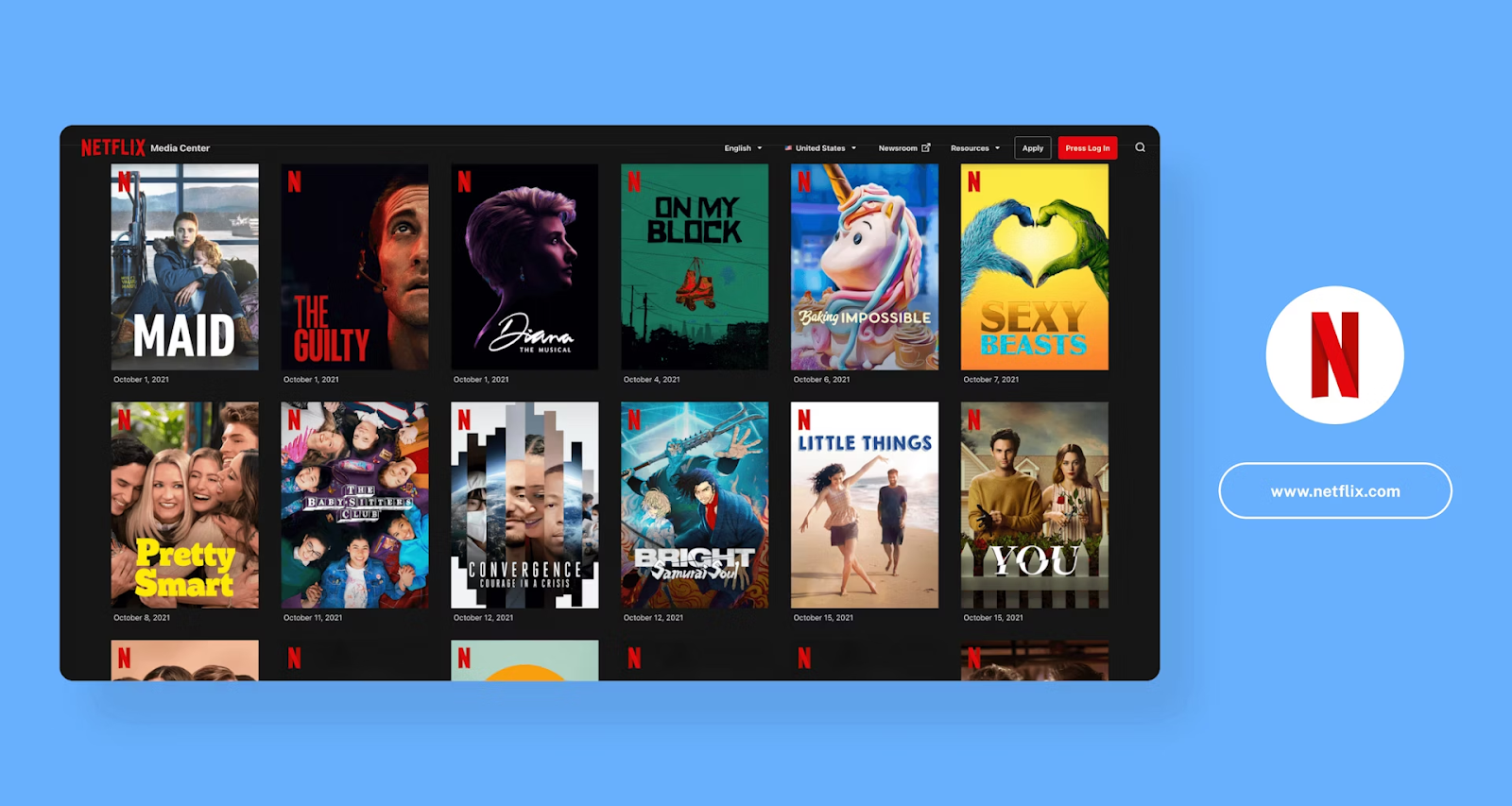
Netflix, the world's leading streaming service with over 209 million subscribers in 190+ countries, began as a DVD rental business in 1997 and transitioned to streaming in 2007. It already existed in the video rental space, but saw a chance to develop a new product and expand into a new market—the video streaming services industry.
After this immense success, today key aspects of its product development include:
- Consumer science: Netflix employs a methodology of experimenting, testing, and learning from user behavior to drive engagement, retention, and product success
- Rapid prototyping: The Netflix team quickly create and test product prototypes with real users to validate ideas
- Personalization: The platform uses AI and machine learning to offer personalized content recommendations, improving user experience
- Original content: Focuses on producing original series like Stranger Things, Bridgerton, and Squid Game, to attract and retain subscribers, driving continuous innovation
🧠 Hungry for more? Get your fill of innovation with these creative product development examples.
Final notes on NPD
Having an efficient new product development process is essential to bringing your final product to the market. Hopefully, by following these steps and expert tips and adapting them to your business strategy, you can build a successful product.
Frequently asked questions about the new product development process
What is new product development?
What is new product development?
New product development is the complete process of turning an idea into a marketable new product. A company may develop an idea for an entirely new product or improve an existing product to meet new or evolving customers' needs.
What are the 7 stages of product development?
What are the 7 stages of product development?
New product development is the process of bringing a new, original product idea to the market. The process can vary depending on the industry, company, and type of product. However, typical steps in the new product development process include idea generation, idea screening, concept development and testing, marketing strategy and business analysis, product development, test marketing, and product launch.
How long does it take to develop a new product and get it to market?
How long does it take to develop a new product and get it to market?
How much time you need will depend on several factors, including the complexity of the product, the industry, the company stage, and the resources available. It involves working through the seven stages of the product development process, so consider your project and how long you expect each stage to take.
What’s the difference between product development and product management?
What’s the difference between product development and product management?
Product development and product management are not the same, though they are closely related and often overlap:
- Product development focuses on building the product. This involves turning ideas into reality through stages like prototyping and testing
- Product management focuses on the strategy behind the product. This includes defining its purpose, prioritizing features, and ensuring it meets market needs

